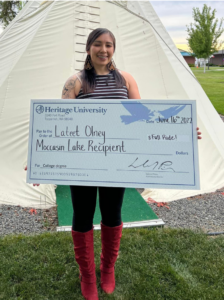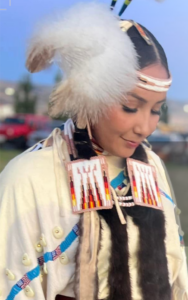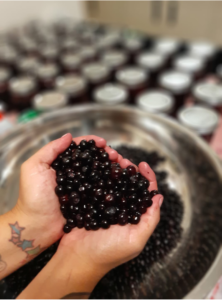The Answered Prayers of My Grandmothers – Wings Summer 2024

Focus on indigenous tradition leads student to Heritage University’s American Indian Studies major —
and a plan to teach the next generation.
Lateet Olney, a freshman majoring in American Indian Studies, remembers the prayers, the singing, the dances. Most of all, she remembers the reverence of her family’s traditions. Growing up on the Yakama reservation in a big family, she was raised as a member of the Native American Church in a very spiritual home. At her father’s knee, she learned about the “red road” — the name Indigenous people use to refer to living life with a deep respect for oneself, for elders and young ones, for creation and the Creator: a state of being in harmony with the universe.
“These are the traditions your grandmother, great-grandmother, and great-great-grandmother lived,” her father told her.

Lateet Olney holds a poster-sized check that represents her scholarship award
From the time of Olney’s earliest memories, people from various tribes would gather at her parents’ home. She remembers the most devout and active among them were her uncle and aunt — PeterJoe and Audrey — and how they guided her toward the “powwow trail” as she approached adulthood. As she journeyed from one powwow to another throughout the Pacific Northwest and the American Southwest, Olney became completely immersed in Indigenous culture.
As she learned more about the celebrations and spiritual customs of her own and other tribes, she saw how honoring and practicing those traditions kept them alive and meaningful. She saw the way they were purposely passed on to the young people.
Olney prayed before each journey for greater knowledge, understanding and growth, and she received it. The powwows, the celebrations, the physical journey brought clarity to her personal journey.
HERITAGE PROGRAM FORMALIZES EDUCATION
Olney found the next step in her evolution in Heritage’s American Indian Studies program, a major in which history, linguistics, art, literature, and social studies all combine to inform students on the past and present of indigenous people.
The program was designed to promote a rich and layered understanding of the Native American experience, said Blake Slonecker, Chair of the Department of Humanities. “In the most basic sense, we are a native-serving institution, and we understand ourselves as being rooted in the place where we are, so the program is a natural outcome of this,” Slonecker said.
The program is small but has been steadily growing. Most students who enter the program are members of the Yakama Nation or members of the tribal community. Eleven percent of Heritage’s students are Native American.

Lateet Olney
“Because of this, it’s important that we create and offer a learning environment where students can explore what is essential to their identities,” Slonecker said.
As much as possible, the Heritage courses are taught by Indigenous instructors. Current Yakama instructors include Greg Sutterlict, Ph.D., Languages and Literature professor and Director of the Center for Language Revitalization & Preservation, who teaches the Yakama language Sahaptin, known as Ichishkiin. Vivian Harrison and Ida Shock, both Yakama, are art instructors. Arlen Washines, a Yakama elder, has taught history and traditional knowledge of the Yakama people at the University of Idaho and will teach a course on the subject at Heritage this fall. Elese Washines, enrolled Yakama, has taught tribal governance and sovereignty for several years.
Slonecker credits Maxine Janis, Ed.D., President’s Liaison for Native American Affairs, as instrumental in connecting Yakama instructors with the university — a much-needed aspect ofthe program. He also says having Yakama staff members in place in Advising and Admissions means the major is increasingly actively discussed with enrolling students.
“Having more staff members who are Yakama talking about the program means more students become interested in it,” Slonecker said. “Within a small community like ours, including within the Yakama Nation, word of mouth makes a difference.
“We’re actively working to bring more indigenous faculty on board as we also encourage more students to consider this major.”
WALKING IN “TWO WORLDS”
Olney sees Heritage’s American Indian Studies program as a way to help her people honor their ancestors and, at the same time, move forward. She said one important way that’s been done more effectively in recent years is via the nearby Mount Adams School District practices.
“Our grade schools are bringing in some of our Yakama ways, welcoming people in Ichishkiin, recognizing we are all on Yakama land, having powwows and traditional food feasts,” she said. “These were not part of my experience in grade school.”
She notes that the Yakama Nation Tribal School is only middle school and high school, not grade school, but said that what’s now included in the Mount Adams School District curriculum does represent progress. She notes that some Sahaptin is taught, but “our teachers are aging, so we need to figure that out. There are big shoes that need to be filled.
“There needs to be an understanding among more Yakama people about what and where we come from, our traditions, and how to walk in the two worlds together.”
Olney wants to be an educator or work in nonprofit management. Other paths for an American Indian Studies major include becoming an archivist, advocate or cultural resource manager, tribal administrator, researcher or journalist.
“The more we have students come into the program, graduate, and move into successful careers, the more we get on people’s radar,” Slonecker said.
FINDING THAT SENSE OF DIRECTION
Lateet Olney is an early riser who takes time to experience each morning as a ritual. She gets up and opens her curtains, goes to the kitchen sink and fills a glass with water. She sits and drinks, putting her focus on “good thoughts” about what she wants to do in the day ahead. Following her own quiet time, she walks into her 11-year-old daughter Madison’s bedroom to gently wake her.
“I tell her not to rush,” Olney said. “I never want her to rush. It’s important to start the day slowly.”
She wishes for her daughter the same things she wishes for herself and all her people.
“I wish for her a happy and healthy life,” Olney said. “That she can find joy. That she can find her own purpose.”
Olney thinks about the four pillars of her religion, though she hesitates to call it a “religion.”
“That’s because it’s a way of life,” she said. “Thinking about our Native American Church and the four main pillars — they are love, faith, hope and charity. When I think about those and the red road, I believe if you’re following them, you can find a sense of direction.”
 As she learns more about her people’s traditions and beliefs, whether at a powwow or during her day at Heritage, she feels a sense of awe.
As she learns more about her people’s traditions and beliefs, whether at a powwow or during her day at Heritage, she feels a sense of awe.
“When I’m learning, sometimes it has me speechless, whether I’m taking a thousand notes or quietly listening,” she said. “We are taught to be quiet. We are taught to never think we know it all but to take it all in, our history, our language, our art. When I get to learn, I reflect on all that I am.”
As Olney decided on her educational path, she said her main thought was, “I don’t want to be wrapped up in a work world that isn’t connected with who I am.
“What I chose with this program means learning everything I can so I can share it,” Olney said. “I want to keep our traditional way of life alive and live it every day and pass it on to our children, not just for them but for the generations after them.
“They’ve done it all for us to keep this prayerful way of life moving forward. In this way, I am the answered prayer of my grandmother and her grandmothers before her.”![]()
